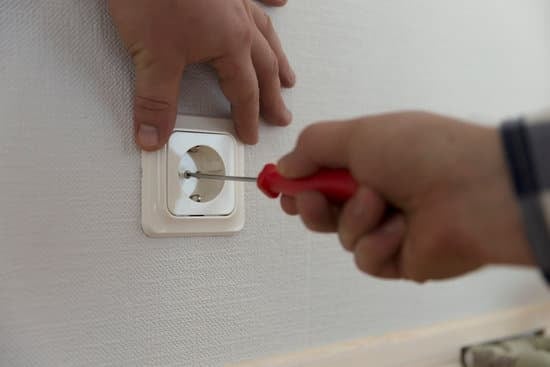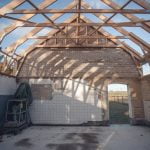Can you claim home improvements on 2018 taxes? Homeowners often wonder whether the money they spent on improving their homes can be deducted from their taxes. This article will provide valuable information about the types of home improvements that are typically eligible for tax deductions, the eligibility requirements and restrictions, the documentation needed, as well as how to claim home improvements on 2018 taxes.
Home improvements refer to any modifications made to a residence in order to enhance its value, functionality, or energy efficiency. As a homeowner, it’s important to understand how these improvements can potentially affect your tax liability. Tax deductions and credits can help offset the cost of these enhancements, providing some financial relief.
It is essential for homeowners to be aware of the different types of home improvements that can typically be claimed for tax purposes. This includes upgrades that increase energy efficiency, accessibility modifications for medical reasons, and renovations made for business purposes. Understanding the eligibility requirements and restrictions will also play a crucial role when determining if you qualify for these tax benefits.
Types of Home Improvements You Can Typically Claim
When it comes to filing for tax deductions and credits for home improvements, there are certain types of improvements that you can typically claim on your taxes. One common category is upgrades that increase energy efficiency. This can include the installation of energy-efficient windows, doors, insulation, or HVAC systems. These improvements not only benefit the environment but also provide potential tax benefits for homeowners.
Another type of home improvement that may be eligible for tax claims is accessibility modifications for medical reasons. This can involve making changes to the home to accommodate a disability or medical condition. Examples of such modifications include installing ramps, grab bars, or widening doorways to make the home more accessible.
Additionally, renovations made for business purposes may also be claimed on taxes. If you have a designated area in your home used exclusively for business purposes, such as a home office or studio, you may be able to deduct the expenses related to its construction or renovation.
Overall, these types of home improvements offer opportunities for tax relief and should be considered by homeowners who have completed these projects within the tax year. It’s essential to understand the eligibility requirements and restrictions associated with claiming these improvements to ensure compliance with tax laws and regulations.
Eligibility Requirements and Restrictions
When it comes to claiming home improvements on your 2018 taxes, there are certain eligibility requirements and restrictions that need to be considered. Understanding these guidelines is crucial to ensure that you are compliant with tax laws and maximize your potential tax benefits.
One of the key eligibility requirements for claiming home improvements on your taxes is that the improvements must be capital in nature. This means that they must enhance the value of your home, prolong its useful life, or adapt it to new uses. Regular maintenance and repairs do not qualify as capital improvements and therefore cannot be claimed on your taxes.
In order to claim home improvements on your taxes, it is important that the property in question is used as your primary residence. Second homes or investment properties may not be eligible for certain tax benefits related to home improvements. It’s essential to have proper documentation, such as utility bills or voter registration, to prove that the property is indeed your primary residence.
While many home improvements can offer tax benefits, there are limitations on claiming expenses for luxury items. For example, if you decide to install a swimming pool or a lavish outdoor kitchen, these expenses may not qualify for tax deductions or credits. It’s important to carefully review what types of improvements are considered eligible under tax laws before making any claims.
Understanding these eligibility requirements and restrictions will help homeowners navigate the process of claiming home improvements on their 2018 taxes in a compliant and effective manner.
Documentation Needed
When it comes to claiming home improvements on your 2018 taxes, it is essential to have the proper documentation in order to support your claims. Without the necessary paperwork, you may not be able to prove that the improvements were made and paid for, which could result in a disqualification of your tax benefits.
Receipts and Invoices
One of the most important pieces of documentation needed to claim home improvements on your taxes are receipts and invoices for the actual improvements. These documents should clearly outline the cost of the materials and labor involved in the renovation or upgrade. It is important to keep these receipts organized and easily accessible as you will need them when filing your taxes.
Proof of Payments Made
In addition to receipts and invoices, it is crucial to have proof of payments made for the home improvements. This can include canceled checks, bank statements showing electronic transfers, or credit card statements highlighting the payments. Having clear evidence of payment will strengthen your case when claiming these expenses on your taxes.
Contractor Agreements and Permits
If you hired a contractor to perform the home improvements, it is necessary to have a copy of the signed contractor agreement as well as any permits obtained for the work. This will help substantiate that the improvements were completed by a professional and were done in compliance with local building codes and regulations. Keeping detailed records of any contracts or permits can help demonstrate that the renovations were legitimate and eligible for tax benefits.
How to Claim Home Improvements on 2018 Taxes
Filing for tax deductions on home improvements can be a beneficial way to save money and potentially increase the value of your property. Here are the steps to claim home improvements on your 2018 taxes:
- Filling out the appropriate tax forms: When claiming home improvements, you will need to fill out the IRS Form 5695 for residential energy credits or Schedule C for business-related renovations.
- Guidelines for itemizing deductions: If you choose to itemize your deductions rather than taking the standard deduction, you will need to provide detailed documentation of your home improvement expenses. Keep in mind that not all home improvement expenses are eligible for tax deductions, so it’s important to consult with a tax professional if you are unsure.
- Discussing the difference between tax credits and tax deductions: It’s essential to understand the distinction between tax credits and tax deductions when claiming home improvements on your taxes. While deductions reduce your taxable income, credits provide a dollar-for-dollar reduction in the amount of tax you owe.
To ensure accuracy and compliance with IRS regulations, it is advisable to seek professional advice when claiming home improvements on your 2018 taxes. An experienced accountant or tax preparer can guide you through the process and help maximize potential benefits while avoiding common mistakes that could lead to penalties or audits.
Remember that keeping accurate records and proper documentation of your home improvement expenses is crucial when claiming them on your taxes. By following these guidelines and seeking professional assistance, homeowners can navigate the complexities of tax laws and regulations to make the most of potential savings from their home improvement projects.
Potential Tax Benefits and Savings
When it comes to making home improvements, there may be potential tax benefits and savings that homeowners can take advantage of. Here are some key points to consider when exploring the potential tax benefits for home improvements on your 2018 taxes:
- Calculating potential tax savings: It’s important to understand how home improvements can impact your tax liability. Certain upgrades, such as those that increase energy efficiency or make your home more accessible for medical reasons, may qualify for tax credits or deductions. By calculating the potential tax savings from these improvements, you can determine whether they are worth pursuing from a financial standpoint.
- Impact of home improvements on property value: In addition to potential tax benefits, it’s also important to consider how home improvements can impact the overall value of your property. Upgrades that enhance the appeal and functionality of your home not only provide immediate benefits but can also increase its resale value in the future. This long-term financial benefit should be factored into your decision-making process when considering which home improvements to pursue.
Considering these factors can help homeowners make informed decisions about which home improvements to prioritize in order to maximize potential tax benefits and ensure a positive return on investment.
It’s important to consult with a tax professional or accountant who can provide guidance on navigating the complexities of tax laws and regulations related to home improvements. They can help ensure that you are taking full advantage of any available tax credits or deductions while avoiding common mistakes that could lead to issues with the IRS.
Ultimately, accurately documenting and reporting your eligible home improvements on your 2018 taxes is crucial for maximizing any potential tax benefits and savings. By seeking out professional advice and staying informed about current tax laws, homeowners can make well-informed decisions about their home improvement projects that align with their financial goals.
Common Mistakes to Avoid
When claiming home improvements on your 2018 taxes, it’s important to be aware of common mistakes that could lead to issues with the Internal Revenue Service (IRS). One common mistake to avoid is failing to properly categorize improvements. It’s essential to understand the distinction between repairs and improvements.
While repairs are expenses that simply maintain a property’s current condition, improvements add value or prolong the property’s life. If you mistakenly claim regular maintenance expenses as home improvements, you could face penalties from the IRS.
Another mistake to steer clear of is incorrectly claiming regular maintenance expenses. Routine upkeep such as lawn care, house cleaning, and pest control are not eligible for tax deductions or credits. Only substantial enhancements like adding a new room or installing energy-efficient appliances can be claimed on your taxes. Make sure to accurately distinguish between regular maintenance costs and actual home improvements when preparing your tax return.
Lastly, it’s crucial not to overestimate the value of improvements when filing your taxes. Some homeowners may inflate the cost of their home improvements in an attempt to increase their tax savings.
This is a risky move that could result in an audit by the IRS if they suspect that you’re exaggerating the value of your home upgrades. Always ensure that the amount you claim for home improvements on your taxes accurately reflects the true cost of the work done by obtaining and retaining all relevant receipts and invoices.
Seeking Professional Advice
When it comes to claiming home improvements on your taxes, seeking professional advice is crucial. The complex nature of tax laws and regulations, as well as the potential for considerable tax savings, make consulting with a tax professional highly beneficial. With the constantly changing tax codes and deductions, having an expert in your corner can ensure that you are maximizing your tax benefits while avoiding costly mistakes.
A tax professional can provide guidance on which home improvements are eligible for deductions and credits, as well as help you navigate the documentation needed for filing your taxes correctly. They can also advise you on how to properly categorize different types of improvements and avoid common mistakes such as incorrectly claiming regular maintenance expenses or overestimating the value of improvements.
In addition to providing valuable advice, tax professionals can also handle the preparation and filing of your taxes, which can be especially advantageous if you have multiple sources of income or other complex financial situations. Hiring an accountant or tax preparer can save you time and alleviate the stress of dealing with complicated tax forms and calculations.
Ultimately, seeking professional advice when it comes to claiming home improvements on your 2018 taxes can ensure that you are taking full advantage of potential tax benefits while staying compliant with IRS regulations.
| Tax Professionals | Benefits |
|---|---|
| Expert guidance on eligible deductions and credits | Maximizing tax benefits and avoiding costly mistakes |
| Handling preparation and filing of taxes | Time-saving and stress-alleviating |
Conclusion
In conclusion, claiming home improvements on your 2018 taxes can result in significant tax benefits and savings if done correctly. By understanding the types of home improvements that are typically eligible for tax deductions and credits, as well as the eligibility requirements and restrictions, homeowners can take advantage of potential tax savings. It is important to keep accurate documentation such as receipts, invoices, proof of payments, contractor agreements, and permits to support your claims.
Furthermore, it is essential to fill out the appropriate tax forms and understand the difference between tax credits and tax deductions when claiming home improvements on your taxes. Calculating potential tax savings and considering the impact of home improvements on property value can further highlight the benefits of properly claiming these expenses.
Lastly, seeking professional advice from a tax professional or hiring an accountant or tax preparer could help navigate the complexity of tax laws and regulations. It is crucial for homeowners to avoid common mistakes such as failing to properly categorize improvements, incorrectly claiming regular maintenance expenses, or overestimating the value of improvements. By doing so, individuals can maximize their potential tax benefits while maintaining compliance with IRS regulations.
Frequently Asked Questions
How Far Back Can You Write Off Home Improvements?
Generally, the IRS allows you to write off home improvements as long as they are considered a capital improvement to your home. This means that the improvement must add value to your home or prolong its life.
There is no specific time limit for writing off home improvements, but it’s important to keep records of all expenses in case you need to prove their validity.
What Home Improvements Are Not Tax-Deductible?
While many home improvements can be tax-deductible, there are several that are not eligible for this benefit. These include general maintenance and repairs, such as painting or fixing a leaky faucet.
Additionally, any improvements made to increase the value of the property for personal taste or preferences, like adding a swimming pool or extravagant landscaping, are generally not tax-deductible.
How Do I Prove Home Improvements Without Receipts?
If you need to prove home improvements without receipts, there are alternative ways to do so. You can provide bank statements showing payments for materials or labor, credit card statements for purchases related to the improvements, or even written contracts with service providers outlining the work done and costs incurred.
It’s also helpful to take before and after photos of the improvement as further evidence if receipts are unavailable. Keep in mind that having some form of proof is crucial when claiming deductions for home improvements without receipts.

I’m thrilled to have you here as a part of the Remodeling Top community. This is where my journey as an architect and remodeling enthusiast intersects with your passion for transforming houses into dream homes.





